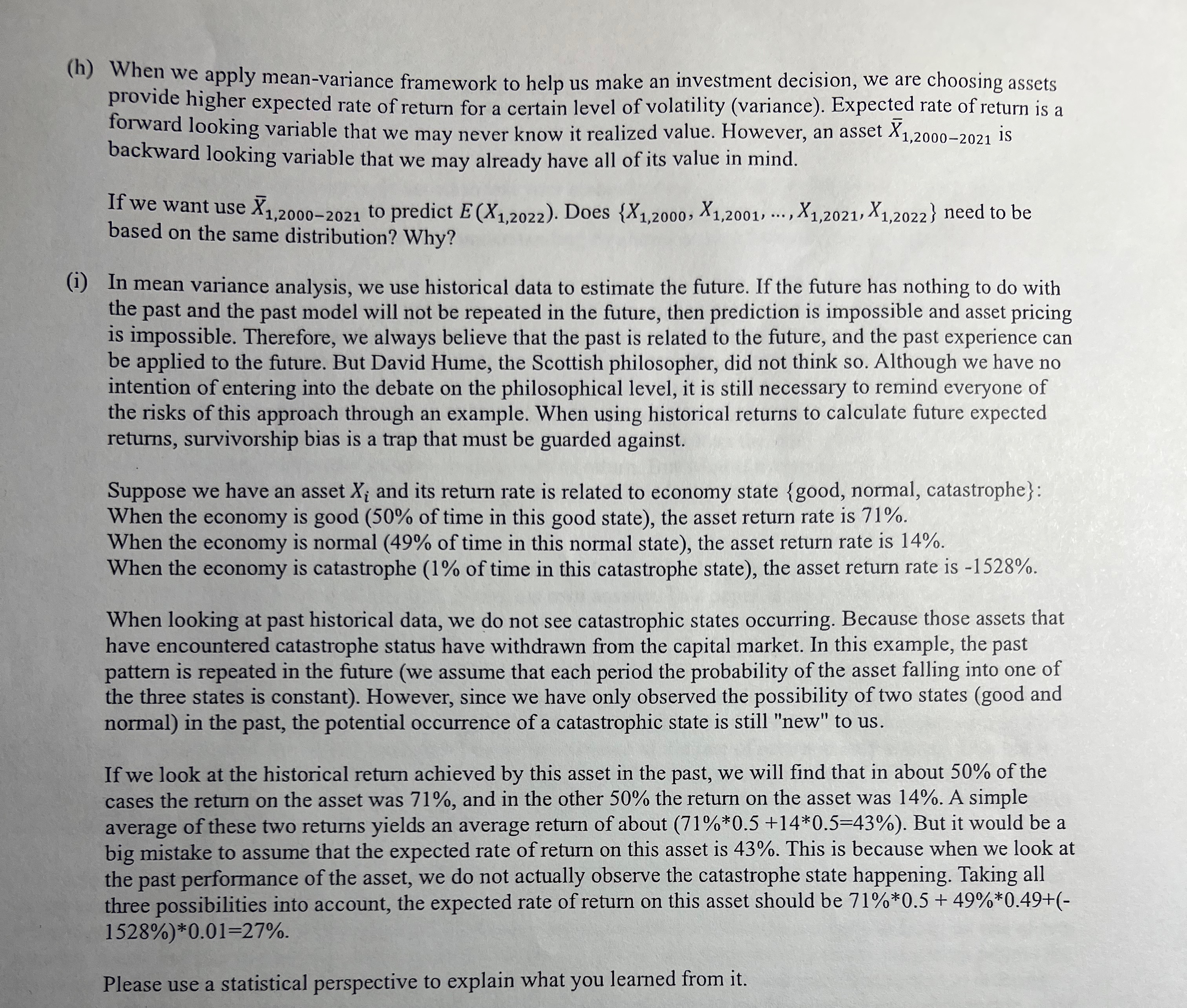(h) When we apply mean-variance framework to help us make an investment decision, we are choosing assets provide higher expected rate of return for a certain level of volatility (variance). Expected rate of return is a forward looking variable that we may never know it realized value. However, an asset X1,2000-2021 is backward looking variable that we may already have all of its value in mind. If we want use X1,2000-2021 to predict E (X1,2022). Does {X1,2000, X1,2001, ..., X1,2021, X1,2022} need to be based on the same distribution? Why? (1) In mean variance analysis, we use historical data to estimate the future. If the future has nothing to do with the past and the past model will not be repeated in the future, then prediction is impossible and asset pricing is impossible. Therefore, we always believe that the past is related to the future, and the past experience can be applied to the future. But David Hume, the Scottish philosopher, did not think so. Although we have no intention of entering into the debate on the philosophical level, it is still necessary to remind everyone of the risks of this approach through an example. When using historical returns to calculate future expected returns, survivorship bias is a trap that must be guarded against. Suppose we have an asset X; and its return rate is related to economy state {good, normal, catastrophe} : When the economy is good (50% of time in this good state), the asset return rate is 71%. When the economy is normal (49% of time in this normal state), the asset return rate is 14%. When the economy is catastrophe (1% of time in this catastrophe state), the asset return rate is -1528%. When looking at past historical data, we do not see catastrophic states occurring. Because those assets that have encountered catastrophe status have withdrawn from the capital market. In this example, the past pattern is repeated in the future (we assume that each period the probability of the asset falling into one of the three states is constant). However, since we have only observed the possibility of two states (good and normal) in the past, the potential occurrence of a catastrophic state is still "new" to us. If we look at the historical return achieved by this asset in the past, we will find that in about 50% of the cases the return on the asset was 71%, and in the other 50% the return on the asset was 14%. A simple average of these two returns yields an average return of about (71%*0.5 +14*0.5=43%). But it would be a big mistake to assume that the expected rate of return on this asset is 43%. This is because when we look at the past performance of the asset, we do not actually observe the catastrophe state happening. Taking all three possibilities into account, the expected rate of return on this asset should be 71%*0.5 + 49%*0.49+(- 1528%)*0.01=27%. Please use a statistical perspective to explain what you learned from it







